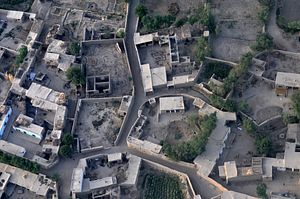Last fall, for the first time in almost 14 years since the United States invaded Afghanistan in 2001, a major Afghan city fell to the Taliban. Taliban fighters held Kunduz for 15 days before Afghan forces, with U.S. assistance, managed to repel and recapture the northern Afghan city. The military operations that took place over those 15 days were far from clean and measured. The Afghan Armed Forces were initially unprepared for the contingency, despite Taliban activity around the city since at least April 2015, and, though U.S. special forces support helped turn the tide of the battle in October, incidents like the airstrike on a hospital run by Médecins Sans Frontières underlined the frenzied chaos of the operation.
On Monday, the New York Times ran a report outlining the operational conditions that affected Afghan forces during the Kunduz operation in late-September and early-October 2015 (building on new information released in the recent Pentagon inquiry into the Médecins Sans Frontières airstrike). The article is worth a read for anyone still tracking strategic developments in Afghanistan and really underlines the continuing difficulties for the country’s armed forces. Moreover, even as U.S. President Barack Obama has declared the U.S. combat mission in Afghanistan to be over, U.S. involvement in Kunduz suggested that American troops are an important force multiplier.
Since late 2014, U.S. and NATO forces in Afghanistan have a limited role proscribed under the Bilateral Security Agreement (BSA) and Status of Forces Agreements (SOFA) respectively. What used to be the International Security Assistance Force is now a more limited Resolute Support Mission, comprising some 11,000 odd U.S. and NATO troops combined. In theory, these troops have stayed behind to train and advise Afghan troops, eventually building up to a complete withdrawal and leaving Afghan troops to their own devices.
As the Times story outlines in great detail, pulling from the still-heavily-redacted Pentagon report, Kunduz, perhaps more than any other recent military operation in Afghanistan, highlighted the extent to which the parameters under which U.S. troops continue to operate in Afghanistan is greatly blurred. During the fight to retake Kunduz, U.S. Special Forces found themselves in close-quarters combat. The exceptional training of U.S. soldiers was a critical factor in turning the tide on the battlefield against the Taliban.
Moreover, the story really hits home the challenges that remain in battlefield communication between U.S. and Afghan forces. High-level communication between Gen. John F. Campbell, the commander of U.S. forces in Afghanistan, and senior Afghan generals appear muddled and confused. Some of the problems highlighted in the stories are old ones in Afghanistan; for instance, it’s challenging for well-trained U.S. troops to operate with Afghan troops with considerably less operational expertise and training.
The full story is well worth a read, not only for its insight into the issues discussed above, but for a succinct chronology of the tragic circumstances that led to the killing of 42 innocents at the Médecins Sans Frontières hospital that spurred the Pentagon inquiry in the first place.

































